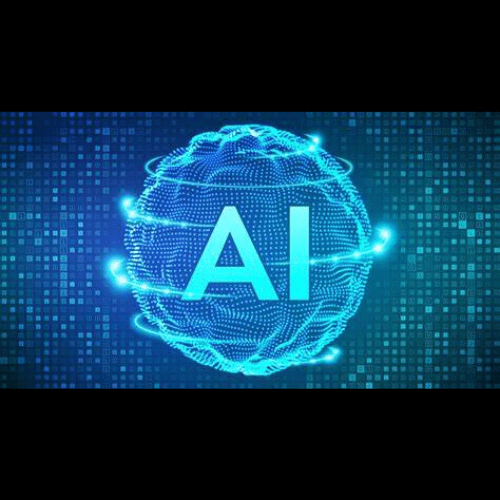Artificial Intelligence (AI) has continued its incredible transformation in 2024, reshaping industries ranging from creative arts to healthcare, and addressing major technical and ethical challenges along the way. As companies push the boundaries of AI applications, new developments in generative models, machine learning (ML), and voice- and image-based AI technologies are capturing global attention. At the same time, the industry is grappling with the very real issue of power consumption, as training and deploying complex AI models require vast computational resources. Let’s dive into the latest AI advancements, explore how power consumption is being managed, and highlight some of the key publicly traded companies leading these innovations.
Generative AI and Transformative Applications
Generative AI, which includes text, image, and voice synthesis, has become a hotbed of innovation, powering applications that range from business productivity tools to creative content generation. After the surge of OpenAI’s ChatGPT in 2023, other major players have entered the market, with companies like Microsoft (MSFT) and Google (GOOGL) expanding AI’s integration into everyday business and personal applications.
One exciting example is Google’s latest Pixel devices, which allow users to seamlessly edit photos using AI by changing facial expressions, adjusting lighting, and more. Similarly, Microsoft has integrated its AI model, Copilot, directly into Microsoft Office, making it easier for users to draft emails, create presentations, and summarize documents automatically, thus significantly improving productivity.
Meanwhile, Nvidia (NVDA) continues to lead the charge with its advanced graphics processing units (GPUs), which are essential for powering complex AI tasks. Nvidia’s GPUs are highly sought after for their ability to support the intensive computations required for generative AI, helping to train and deploy AI models efficiently. The company’s commitment to autonomous vehicle development and AI-assisted robotics underscores its influence in AI hardware.
Other companies, like Adobe (ADBE), are tapping into AI by offering generative tools in applications like Photoshop, allowing users to create highly detailed, AI-driven image modifications. By embedding AI tools into familiar software, Adobe makes advanced content creation accessible to everyday users, broadening the impact of generative AI.
Tackling the Power Consumption Problem in AI
As AI models become more complex, their energy consumption has become a pressing issue. Training and deploying large language models (LLMs), like OpenAI’s GPT-4, requires massive computational power, which translates into high energy costs. In response, both researchers and companies are exploring energy-efficient strategies and technologies to curb AI’s environmental impact.
Efficiency-Focused Hardware:
Nvidia (NVDA) is working on optimizing GPUs to be more power-efficient while supporting high-intensity AI computations. Nvidia’s latest H100 GPU chip, designed for data centers, aims to maximize performance while reducing energy consumption, making it a popular choice among tech giants and AI researchers alike.
Custom Chips and Edge Computing:
Google (GOOGL) and Apple (AAPL) are exploring custom AI chips tailored specifically for efficient ML processing. Google’s Tensor Processing Units (TPUs), now in their fourth generation, provide high computational power for AI models with relatively lower power requirements, which helps Google maintain its energy footprint in data centers.
Edge computing—processing data closer to where it is generated rather than in a remote data center—also plays a role in power efficiency. By processing AI computations on devices rather than sending everything to the cloud, companies can reduce data transmission energy costs and improve processing speeds.
Advanced Cooling and Sustainable Data Centers:
Data centers are where a large share of AI’s energy is consumed. Companies like Microsoft (MSFT) are investing in sustainable energy sources and advanced cooling systems to reduce the power needed to run and cool their AI hardware. Using liquid cooling and underwater data centers, Microsoft is pioneering eco-friendly infrastructure that supports AI expansion without ballooning its carbon footprint.
Algorithm Optimization:
Another approach to energy efficiency is optimizing AI algorithms themselves. Meta Platforms (META), for example, is researching ways to train models with smaller, optimized datasets that require less computational power. By reducing the “weight” of these models without sacrificing performance, Meta aims to reduce the cost and environmental impact of training and deploying AI systems.
These innovations in hardware and infrastructure indicate that the industry is committed to tackling the environmental impact of AI. With AI’s growth showing no signs of slowing down, the drive for sustainable, energy-efficient solutions will continue to be essential.
AI in Everyday Applications and Creative Fields
AI’s reach has expanded beyond traditional tech settings into creative fields, introducing powerful tools for music, art, and video production. This convergence of AI with art and entertainment is most visibly seen in the film and music industries.
For instance, Warner Music Group (WMG) and Universal Music Group (UMG) have begun leveraging AI to enhance music production, offering songwriters tools to generate beats, harmonies, and even complete compositions. Meanwhile, in visual media, Disney (DIS) and other studios are employing AI to digitally de-age actors, generate special effects, and create animated characters with realistic expressions.
AI is also assisting content creators on platforms like YouTube, Twitch, and TikTok. Meta (META) introduced AI-driven editing and enhancement tools across Instagram and Facebook, making it easier for creators to produce high-quality content with minimal editing effort. These tools can automatically adjust lighting, add effects, and even provide captions in real time, democratizing content creation and opening new avenues for expression.
Legal and Ethical Considerations
As AI becomes more sophisticated, the ethical and legal landscape is rapidly evolving. One of the most pressing issues is the question of intellectual property rights in AI-generated content. Recent high-profile lawsuits, such as The New York Times vs. OpenAI, highlight concerns over the use of copyrighted material in training generative AI models. Similarly, the music industry has raised concerns over unauthorized voice replication, prompting calls for stricter copyright protections.
Governments and organizations worldwide are beginning to draft AI regulations that address these concerns. For instance, the European Union’s AI Act proposes a risk-based framework, placing specific obligations on high-risk AI systems, while the UNESCO has published guidelines on ethical AI, emphasizing accountability and transparency. These frameworks are likely to shape the future of AI development and adoption, ensuring that innovations respect intellectual property rights and ethical boundaries.
Leading Publicly Traded Companies in AI Innovation
Here’s a look at some publicly traded companies making significant strides in AI:
Nvidia (NVDA) – A leader in AI hardware, providing GPUs crucial for AI training and deployment.
Microsoft (MSFT) – Integrating AI tools across software products, while also investing in sustainable infrastructure for data centers.
Alphabet Inc. (GOOGL) – Continues to innovate with TPUs and data management solutions in AI.
Meta Platforms (META) – Exploring AI-driven tools for content creation and tackling algorithmic efficiency for environmental sustainability.
Apple Inc. (AAPL) – Investing in AI hardware with efficient, custom-made chips.
Adobe Inc. (ADBE) – Offering AI-enhanced tools in creative software for artists and designers.
Conclusion
As AI technology continues to mature, the interplay of innovation and responsibility will define its future. From generative models transforming creative fields to energy-efficient hardware addressing environmental concerns, the AI landscape is more dynamic than ever. The challenge will be in balancing AI’s capabilities with ethical considerations and ensuring that power consumption remains manageable as models grow more sophisticated.
For investors and AI enthusiasts, the companies pioneering these advancements are setting the stage for an AI-powered future that is both innovative and conscious of its environmental footprint. With Nvidia, Microsoft, Alphabet, and others leading the charge, the next phase of AI development promises to be as responsible as it is revolutionary.
by Steve Macalbry
Senior Editor,
BestGrowthStocks.Com
Disclaimer: The author of this article is not a licensed financial advisor. This article is intended for informational purposes only. It should not be considered financial or investment advice. We have not been compensated for the creation or distribution of this article and we do not hold any form of equity in the securities mentioned in this article. Always consult with a certified financial professional before making any financial decisions. Growth stocks carry a high degree of risk, and you could lose your entire investment.
Sources
MIT Technology Review on AI breakthroughs in 2024
Algotive’s coverage on productivity-boosting AI tools
MIT News on AI advancements and energy-efficient hardware
Restackio on sustainable practices in AI data centers and hardware
IPWatchdog on legal and ethical issues surrounding generative AI





